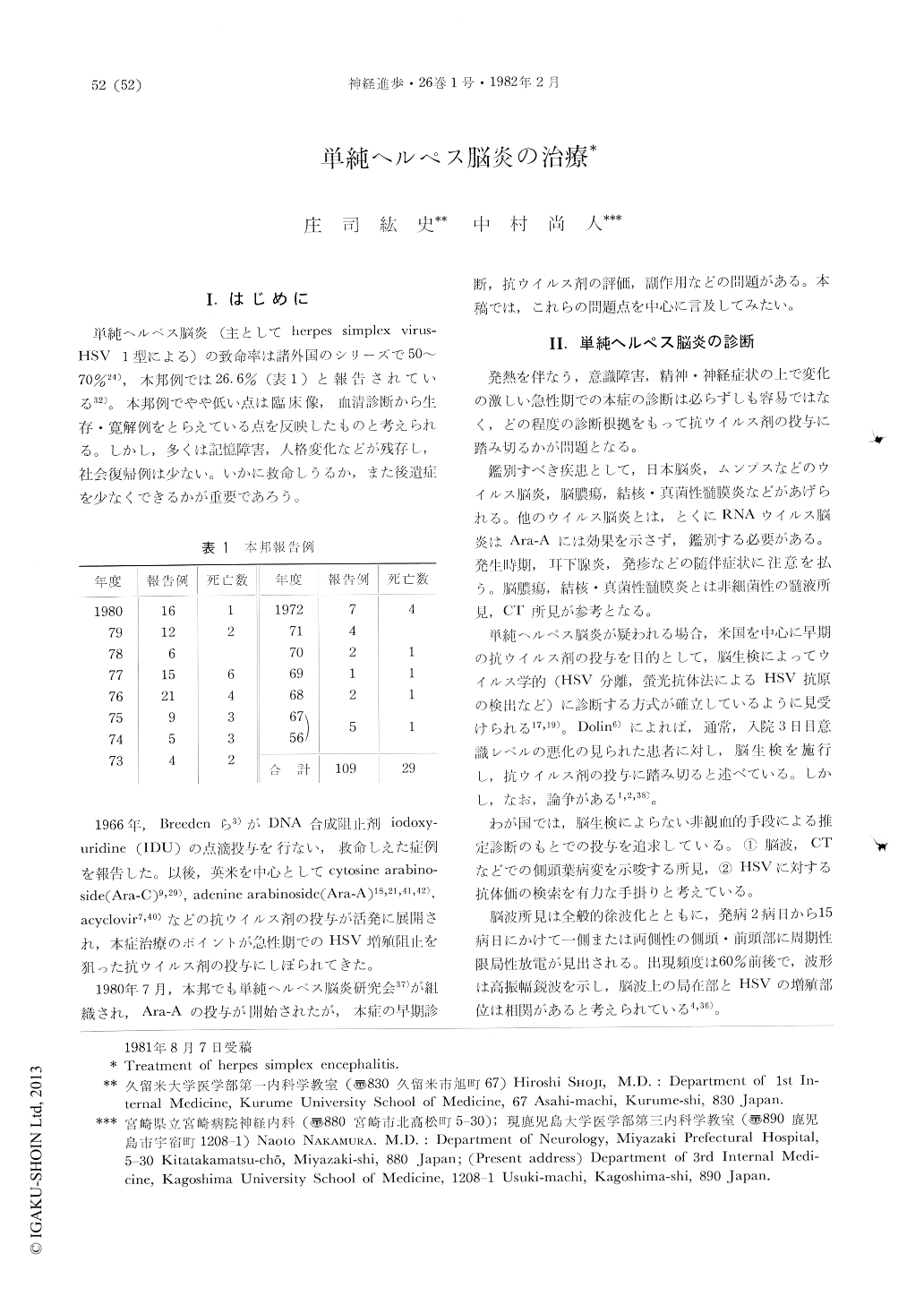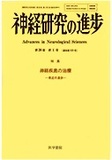Japanese
English
- 有料閲覧
- Abstract 文献概要
- 1ページ目 Look Inside
I.はじめに
単純ヘルペス脳炎(主としてherpes simplex virus-HSV 1型による)の致命率は諸外国のシリーズで50〜70%24),本邦例では26.6%(表1)と報告されている32)。本邦例でやや低い点は臨床像,血清診断から生存・寛解例をとらえている点を反映したものと考えられる。しかし,多くは記憶障害,人格変化などが残存し,社会復帰例は少ない。いかに救命しうるか,また後遺症を少なくできるかが重要であろう。
1966年,Breedenら3)がDNA合成阻止剤iodoxyuridine(IDU)の点滴投与を行ない,救命しえた症例を報告した。以後,英米を中心としてcytosine arabinoside(Ara-C)9,29),adcnine arabinoside(Ara-A)18,21,41,42),acyclovir7,40)などの抗ウイルス剤の投与が活発に展開され,本症治療のポイントが急性期でのHSV増殖阻止を狙った抗ウイルス剤の投与にしぼられてきた。
Herpes simplex encephalitis (HSE) is becoming the most common source of nonepidemic encephalitis in Japan. Over 100 cases of HSE have been reported in Japanese medical journals (the mortality rate is 26.6%).
1) With regards to the treatment, an early diagnosis of HSE is important. We disagree with the use of brain biopsy as a diagnostic procedure. In Japan, HSE is diagnosed from the combination of the clinical features and antibody response to herpes simplex virus, CT, EEG or CAG findings. The autopsy cases of HSE have been confirmed from virological examinations including a virus isolation test.

Copyright © 1982, Igaku-Shoin Ltd. All rights reserved.


